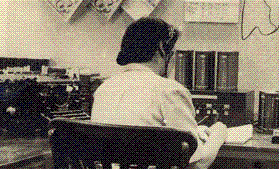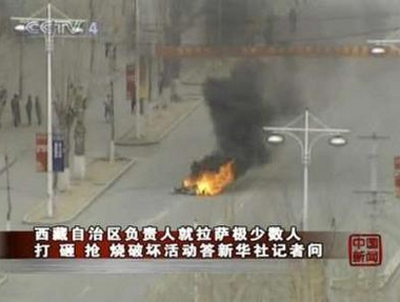Asia-Pacific Region Intelligence Center
Lhasa reverts to calm, 10 dead in riot(중국정부 자료) 본문
Lhasa reverts to calm, 10 dead in riot(중국정부 자료)
CIA Bear 허관(許灌) 2008. 3. 16. 10:07
|
The situation in Tibet capital Lhasa is calm on Saturday, after Friday's riot which saw ten people killed, shops robbed and vehicles burnt. [
|
There was not much traffic on the road early on Saturday. Burnt cars, motorcycles and bicycles remained scattered on the main streets, and the air tinged with smokes, according to local witnesses.
Traffic control was imposed on major streets to maintain order.
Most shops in the city were closed on Saturday. In downtown areas, about a hundred shops were ransacked and vandalized. Smoke was seen belching from the shops destroyed in the riot.
Power supply resumed in quarters along Duosenge Road, the worst hit area by the violence in downtown Lhasa. Local phone call service, however, could not be resumed for the moment as infrastructure of communications was destroyed in Friday's violence.
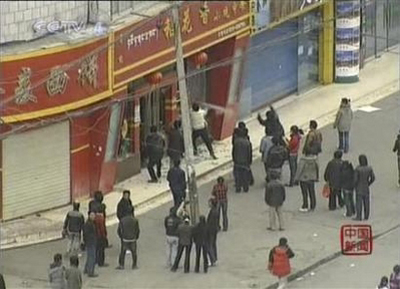
(Photo: CCTV)
According to the witnesses, the unrest started around 1:10 p.m. on Friday, several people clashed with and stoned the local police around the Ramogia Monastery in downtown Lhasa.
Rioters began gathering around 2 p.m. near the Ramogia Monastery, and set fire to shops along two main streets in the capital, and around Jokhang Temple, Ramogia Monastery and Chomsigkang Market. At least five blazing spots were reported and dense smoke was seen blanketing the area.
A number of shops, banks and hotels were burnt, causing blackouts and interruption of communications in some areas. Shops close to the Jokhang Temple and Ramogia Monastery were shut down.
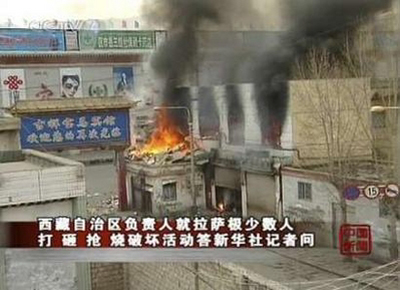
(Photo: CCTV)
A Tibetan government official told Xinhua that there had been enough evidence to prove that the sabotage in Lhasa was "organized, premeditated and masterminded" by the Dalai clique.
The violence, involving beating, smashing, looting and burning, has disrupted the public order and jeopardized people's lives and property, the official said.
Xinhua reporters in Lhasa saw many rioters were carrying backpacks filled with stones and bottles of inflammable liquids, some holding iron bars, wooden sticks and long knifes, a sign that the crowd came fully prepared and meant harm.
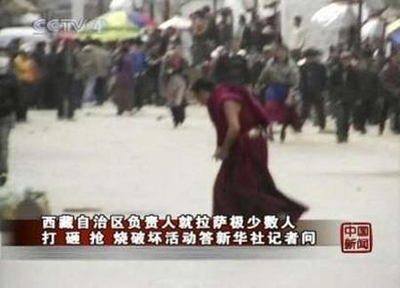
(Photo: CCTV)
The mobs assaulted passersby, sparing no women or children, witnesses said. They hit at things along their path, smashing windows, automatic teller machines and traffic lights. Several clothing shops, restaurants, and mobile phone stores were looted. Bikes, motorcycles and cars were burnt down.
The vandals started burning the local Sifang Supermarket, Landun Shopping Mall and Wenzhou Mall around 3:00 p.m. Friday, causing more blazing spots.
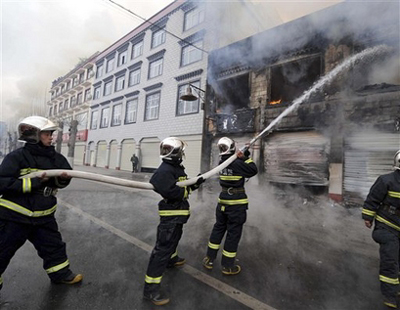
(Photo: Xinhua News Agency)
Altogether ten people were confirmed dead in Friday's riot in Lhasa,and most of the victims were business people, the Tibet regional government said on Saturday morning.
No casualties were reported among foreigners, an official with the foreign affairs office of the regional government said.
Blogger account
A blogger who called himself Han Jinshan, a Lhasa resident, recalled the sabotage in a post titled Four-hour Personal Experience of Lhasa's Riots.
The man drove a car onto the streets in the afternoon only to find flames with heavy smoke blanketed the area of the Ramogia Monastery and ambulances whistled by, according to the post.
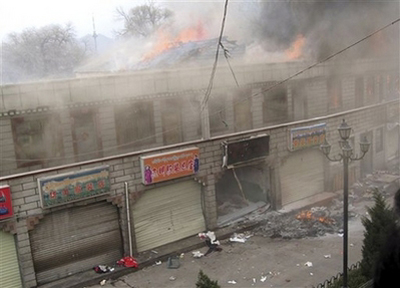
(Photo: Xinhua News Agency)
"When my car arrived at the road entrance to the Ramogia Monastery, I saw the ground was covered with rocks weighing one or two kilograms and a cab was burnt down," he wrote.
"I saw a dozen of mobs, mainly young men in their twenties, were burning cars in front of the Baiyi Supermarket with more than 200 people standing by and watching," he said.

(Photo: Xinhua News Agency)
"At 17:56, a police car arrived and the mobs ran away. The police didn't chase them as another two cabs were on fire at the New Jiangsu Avenue some 300 meters ahead."
"At this time, a Han Chinese women, whose face was bleeding, ran by me and later a cab with broken windows passed by," he wrote.
"The history of Tibet and even of China will remember the day of March 14 in 2008 forever," the writer said.
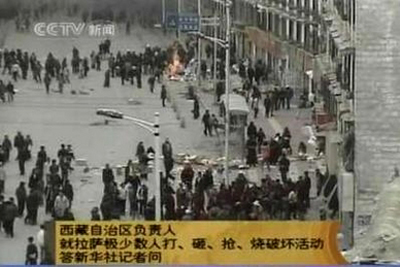
(Photo: CCTV)
(Xinhua News Agency March 15, 2008)
'同一介中華(中國) > 북경정부-中華人民共和國(中國)' 카테고리의 다른 글
| 온가보, 중화인민공화국 국무원 총리로 당선 (0) | 2008.03.16 |
|---|---|
| 중국 국가주석과 중앙군사위원회 주석으로 호금도주석 선출 (0) | 2008.03.16 |
| 중화민국 총통선거 마영구 국민당 후보 압승 예상(머리소리함 지지선언) (0) | 2008.03.15 |
| 티베트 폭동으로 사상자 발생 보도 (0) | 2008.03.15 |
| 티벳 수도 라사 시위 격화 (E) (0) | 2008.03.15 |
